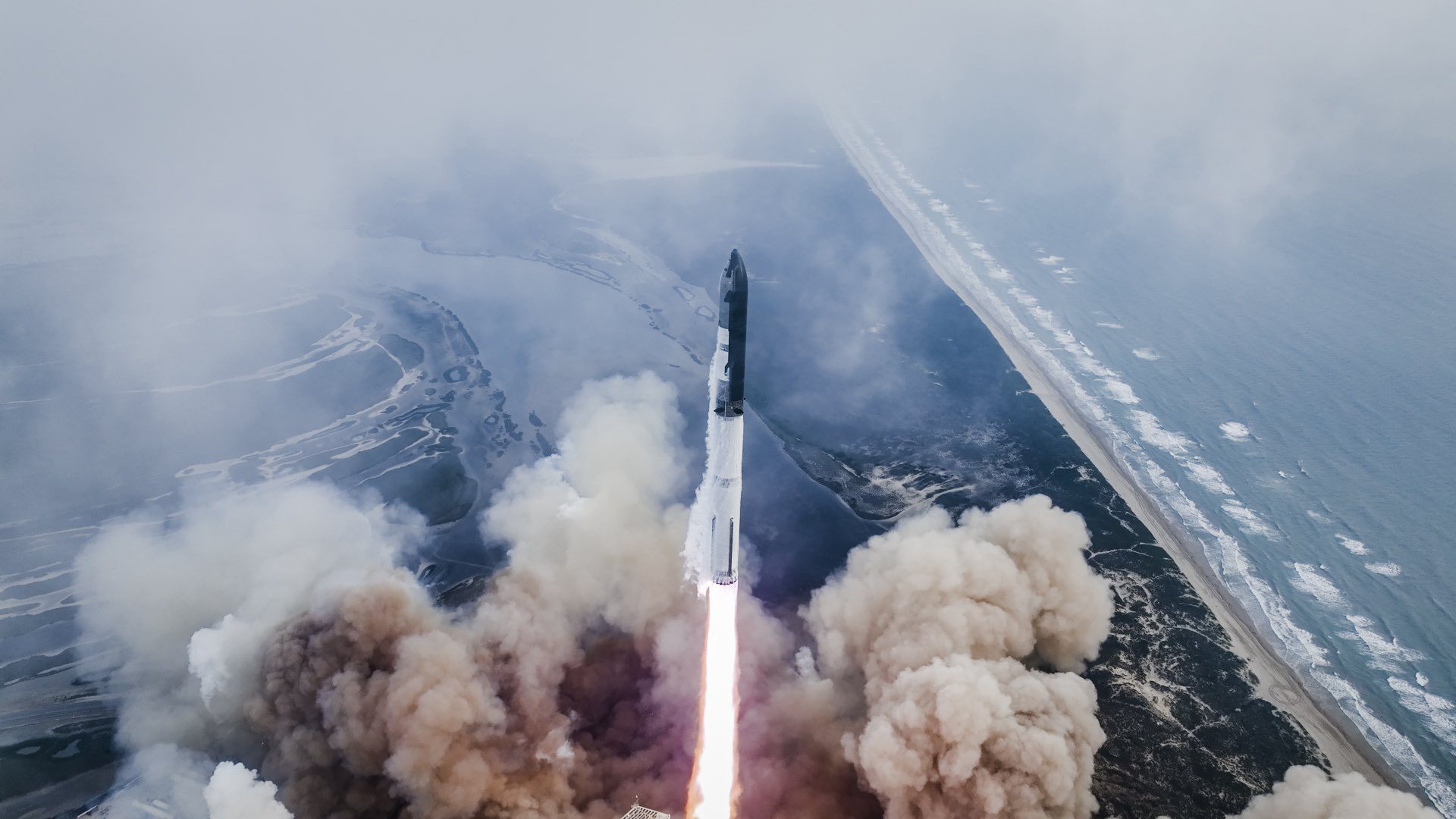SpaceX’s mega rocket blasted off on another test flight overnight and made it farther than two previous attempts, but the spacecraft was lost as it descended back to Earth.
The company said it lost contact with the spacecraft as it neared its goal, a splashdown in the Indian Ocean, about an hour after liftoff from the southern tip of Texas near the Mexican border.
This third test achieved multiple milestones before likely breaking apart. The first two flights last year lasted mere minutes before blowing up over the Gulf of Mexico.
The Starship vehicle — which includes the upper Starship spacecraft and a rocket booster known as the Super Heavy — took off from SpaceX’s private Starbase facility in Boca Chica, Texas, at 8.25am on Thursday (12.25am Friday AEDT).
Contact lost
An hour after lift off, SpaceX commentators said contact had been lost with the spacecraft.
“The ship has been lost. So no splashdown today,” said SpaceX’s Dan Huot.
“But again, it’s incredible to see how much further we got this time around.”
Earlier during the flight, which took place exactly 22 years after the rocket company was founded, SpaceX’s Elon Musk had congratulated his team.
“SpaceX has come a long way,” Musk said via X, the platform formerly known as Twitter, which he now owns.
SpaceX also never intended to recover Starship after this flight test. The spacecraft was expected to make a hard landing. And the Starship spacecraft made it much further into flight than during two previous tests in 2023.
The company routinely frames failures during these early test flights as normal. The goal of these flight tests is to gather crucial data so that engineers can go back and tinker with Starship, improving it for future missions.
SpaceX considers the Starship system crucial to its founding mission: to carry humans to Mars for the first time.
Take off
And critically, NASA has chosen Starship – the biggest and most powerful rocket ever built – as the landing vehicle that will ferry its astronauts to the lunar surface on the Artemis III mission slated to take off as soon as September 2026.
“Congrats to SpaceX on a successful test flight! Starship has soared into the heavens. Together, we are making great strides through Artemis to return humanity to the Moon— then look onward to Mars,” wrote NASA Administrator Bill Nelson on X.
The Super Heavy booster — the first stage, or bottommost part, of the launch vehicle roared to life and soared out over the Gulf of Mexico.



 News3 days ago
News3 days ago


 Leaders3 days ago
Leaders3 days ago


 Shows3 days ago
Shows3 days ago


 News3 days ago
News3 days ago


 Docos5 days ago
Docos5 days ago


 Leaders4 days ago
Leaders4 days ago


 Leaders4 days ago
Leaders4 days ago


 News2 days ago
News2 days ago





